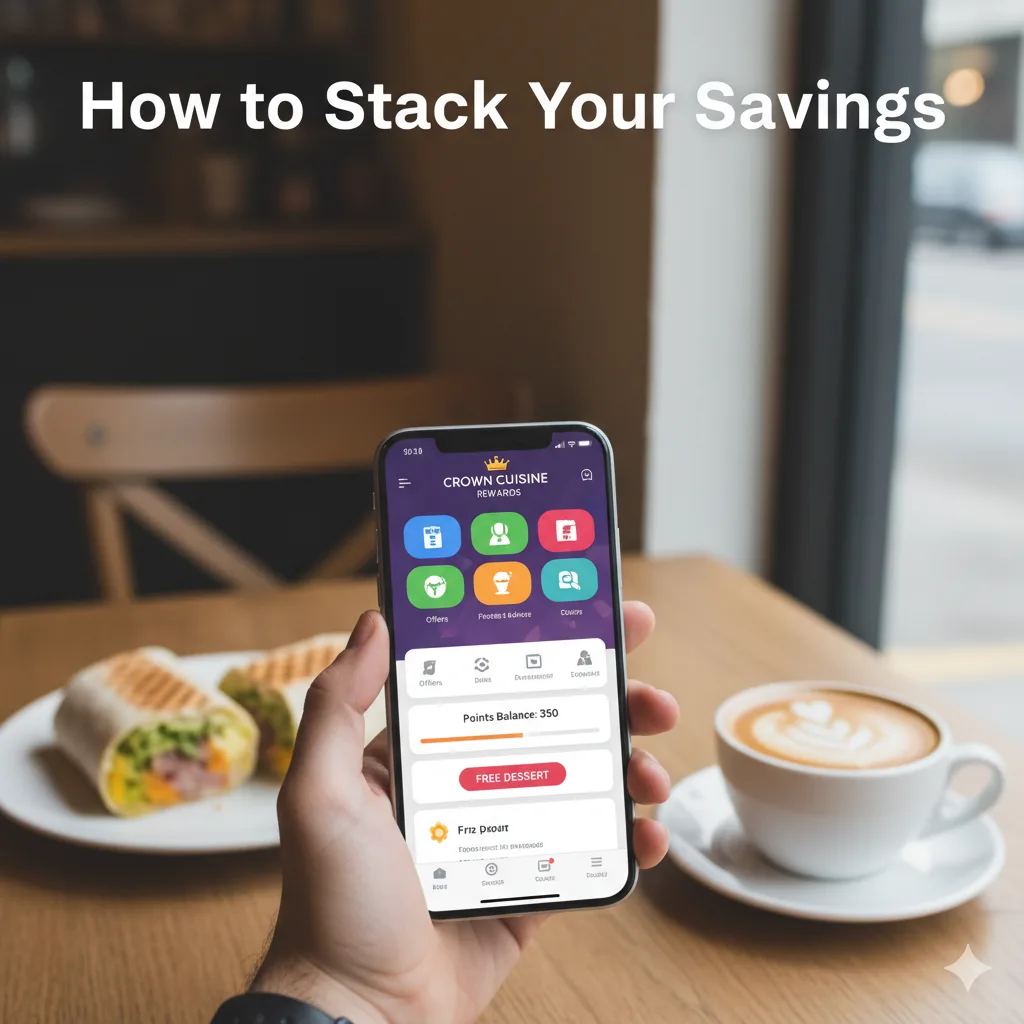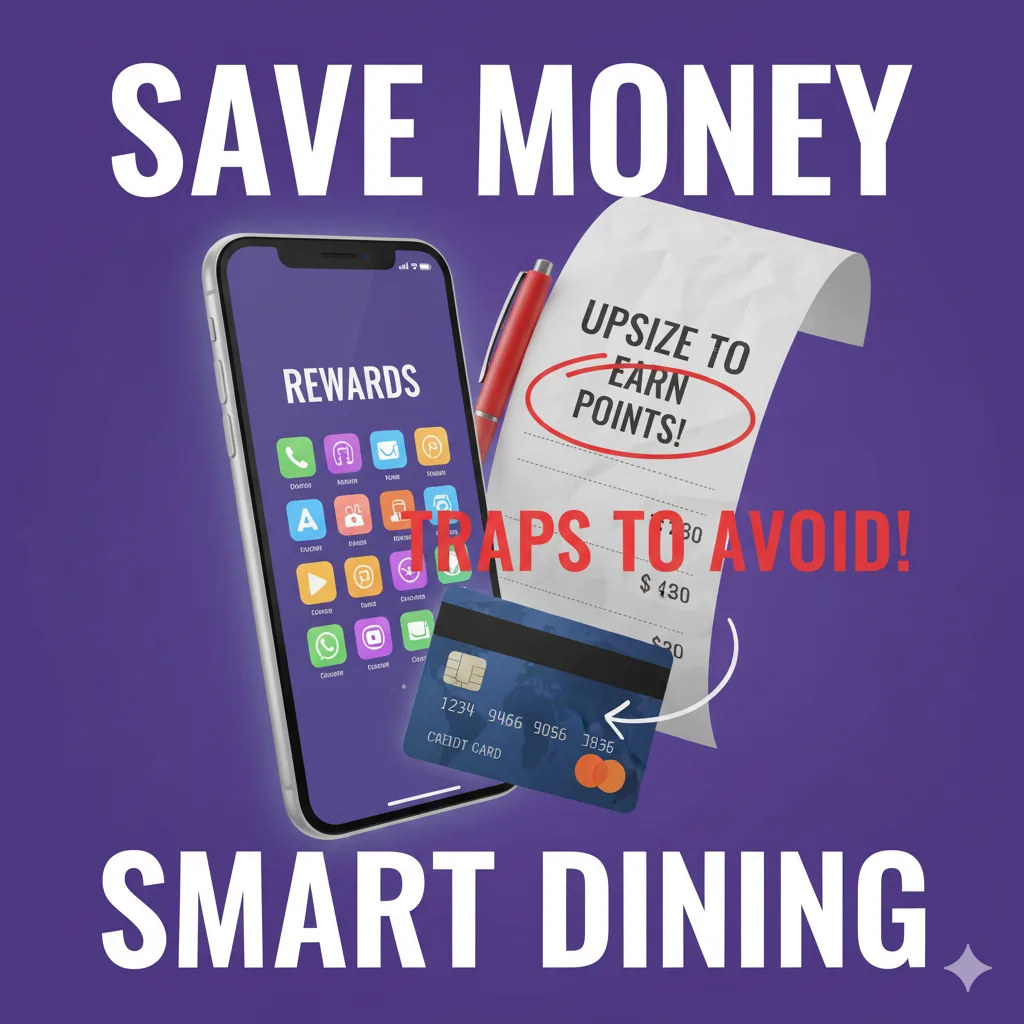Stop Chasing Useless Points. We Found the Loyalty Apps That Genuinely Cut Your Food Bill and Expose the Traps to Avoid.
Your phone screen is probably a graveyard of good intentions. A folder packed with fast-food apps, each one downloaded for a single, glorious freebie, now sitting there collecting digital dust. They all promise exclusive deals, free food, and VIP treatment, but the reality is often a slow, frustrating crawl toward a lukewarm reward. Let’s be honest: most of the best restaurant rewards programs aren’t designed to save you money. They’re designed to make you spend it. But after sifting through the noise, we’ve found a handful of gems that, when used strategically, can put a real dent in your monthly food budget.
I used to be a points-chaser, the person holding up the line while I frantically searched for a QR code to scan. I downloaded every app for a free side of fries only to delete it a week later when I realized the next reward was a hundred dollars away. It wasn’t until I started treating these apps like a tool, not a game, that I saw real savings. I learned the hard way that some programs are built on psychological tricks to get you to spend more. This guide is everything I wish I knew back then—a no-nonsense breakdown of which apps to keep, which to delete, and how to play the game so your wallet wins.

The All-Stars: Loyalty Apps Actually Worth the Space on Your Phone
Not all loyalty programs are created equal. Some are coupon machines, others are masters of making you feel special, and a few turn saving money into a game. The key is to match the program to your personality and spending habits.
For the Deal Hunter: McDonald’s
Forget the points. The MyMcDonald’s Rewards program is less about long-term loyalty and more about instant gratification. Its real power lies in the “Offers” tab, which is consistently loaded with high-value coupons that make it one of the best fast food rewards programs for immediate savings. We’re talking about frequent deals like Free Fries Fridays, 30% off mobile orders, and free items with a purchase of just $1 or more. While you do earn points on every purchase, the app’s primary value is in driving frequent visits by making today’s purchase an absolute no-brainer. The time it takes to see a real benefit is incredibly short, which is why it’s a must-have for anyone looking to cut their fast-food spending now, not six months from now.
For the Creature of Habit: Starbucks
Starbucks Rewards is a masterclass in making customers feel seen. Yes, you earn “Stars” toward free drinks, but the program’s true genius is in its personalization. It remembers your birthday with a free treat, offers “Double Star Days” to help you earn faster, and sends personalized offers based on your order history. This strategy creates an emotional connection that goes beyond a simple transaction. It makes you feel like a regular whose business is genuinely appreciated. The app itself is seamless for ordering ahead and tracking your progress, making the entire experience feel exclusive and effortless. For daily coffee drinkers, the value isn’t just in the free items; it’s in the feeling of being a recognized VIP.
For the Gamified Grinder: Chipotle & Panera
Some programs know that turning rewards into a game can be a powerful motivator. Chipotle Rewards often uses challenges, badges, and limited-time achievements to keep you engaged, like offering free guac for completing a quiz. This makes earning feel more interactive than just passively collecting points. Panera’s MyPanera program is different; it’s often based on visit frequency rather than how much you spend, rewarding you for the habit of stopping by. They also let you share rewards with friends and offer the popular Unlimited Sip Club, which is a fantastic subscription-based loyalty play. These programs are designed to keep the brand top-of-mind by making you an active participant. Just be mindful of the psychology at play—are you ordering because you’re hungry, or because you’re three visits away from a new badge?

Beyond Fast Food: The “Double-Dip” Strategy for Sit-Down Meals
For sit-down restaurants, there’s a powerful strategy that most people miss. It involves layering rewards from different sources on a single purchase—a technique we call stacking dining rewards.
The Secret Multiplier You’re Missing
Beyond individual restaurant apps, there are services called dining rewards networks. These are free programs, often run by airlines and hotels (like Delta SkyMiles Dining or AAdvantage Dining) or cashback sites (like Rakuten Dining), that give you extra rewards for eating at thousands of participating local restaurants. The best part? It’s a “set it and forget it” system. You don’t have to open an app or show a coupon; the rewards are earned automatically in the background.
How to Stack Your Savings
Getting this set up is surprisingly simple and is the key to learning how to maximize restaurant rewards:
- Sign Up for a Dining Network: Choose one that aligns with your goals. If you fly American Airlines, sign up for AAdvantage Dining. If you prefer cash back, use Rakuten. Don’t collect points for an airline you never use.
- Link Your Credit Card: Securely link the credit card you use most often for dining.
- Pay As Usual: That’s it. When you use your linked card at a participating restaurant, you’ll automatically earn rewards from the dining network in addition to the rewards you get from your credit card.
The Power of Stacking: A Real-World Example
This “double-dip” is where the magic happens. You’re earning from two different programs on the exact same dollar. Here’s how a regular $50 dinner can turn into a reward-generating machine.
| Your Action | Where You Earn | Example Reward |
| Pay with Amex Gold Card | American Express | 4x Points on Dining |
| Card is linked to AAdvantage Dining | AAdvantage Program | 5x Miles per Dollar |
| Total Rewards on a $50 Meal | Stacked Programs | 200 Amex Points + 250 AA Miles |
Your Game Plan: 5 Rules to Maximize Rewards Without Overspending
Having the apps is one thing; using them smartly is another. Follow these five rules to make sure you’re saving money, not just spending more.
- Always Grab the Sign-Up Bonus. Many programs give you a freebie just for joining. Subway might give you 250 points, and McDonald’s often has a free sandwich for first-time app users. It’s a no-risk way to get a free lunch.
- Go Deep, Not Wide. Don’t bother with a dozen apps where you have a tiny, useless balance. Pick the 2-3 restaurants you visit most and focus your efforts there. This helps you reach higher tiers and better rewards faster in programs like Chick-fil-A One.
- Plan Your “Birthday Meal Tour.” Many programs offer fantastic birthday rewards, from a free Starbucks drink to a free dessert at Chili’s. Make a calendar note a month before your birthday to check your apps and plan your freebies.
- Never Buy Something Just for the Points. This is the golden rule. The goal is to get a discount on a purchase you were already going to make. If you add a soda you don’t want just to hit a point threshold, you’ve lost the game.
- Check the “Offers” Tab Before Every Order. The most immediate value is often hiding in a separate section from the main loyalty tracker. Make it a habit to check for daily deals or coupons before you even decide what to order.
Red Flags: Loyalty Program Traps That Cost You Money
Not all programs have your best interests at heart. Here are the common restaurant loyalty programs pitfalls to watch out for.
Trap 1: The Endless Treadmill (Unattainable Rewards)
Some programs make earning a reward feel like a full-time job. The math tells the story: you might get a reward from McDonald’s after spending just $15, but at Chipotle, it could take spending up to $160 to earn a single free burrito. If a reward seems impossibly far away, it probably is. The program feels generous but rarely pays out, which is a classic sign of a system that isn’t worth your time.
Trap 2: The Bait-and-Switch (Devalued “Funny Money”)
Remember that points are not cash. They are a currency the company controls, and its value can change overnight. Reddit users lamented when Potbelly “nerfed” its rewards, changing the prize for 1000 points from any sandwich to just a small “skinny” one. This is a huge risk with programs that require you to save up for a big prize; by the time you get there, the prize might have shrunk. This is why programs with frequent, low-value rewards are often safer bets.
Trap 3: The “Just Spend $2 More” Upsell
“You’re only $2 away from earning 50 bonus points!” This is a carefully crafted psychological nudge designed to increase your average order value (AOV). The restaurant knows that if they can get you to add a drink or a side you didn’t plan on buying, they come out ahead. That extra $2 you spent often costs more than the 50 points are actually worth, completely erasing your “savings.”
Trap 4: The Fine Print (Complicated Rules & Expiration)
If a program’s rules for earning and redeeming points are confusing, it’s often by design. Complicated structures, weird exceptions, and short expiration dates are all ways to reduce the number of rewards the company actually has to give out. A good loyalty program should be simple. If you need a spreadsheet to track your progress, it’s a trap.
The bottom line is to be a strategic user, not a passive collector. Pick the few All-Star programs that fit your life, use advanced strategies like the “double-dip” for bigger savings on sit-down meals, and always keep an eye out for the traps. When you do, you can finally make these apps work for your wallet—not the other way around.
Internal Resources:
- Join Buy Nothing Groups to Save Thousands on Free Stuff
- Your Guide to the 2025 Tax Changes: What the New Law Means for You
- Best Cheap Internet Plans 2025: Unbeatable Deals Now
- 5 Fun Money Saving Challenges to Boost Your Savings
- The Ultimate Guide to Cancel Unwanted Subscriptions & Save $1600+
External Resources
- (https://www.nerdwallet.com/best/credit-cards/dining)
- (https://www.aadvantagedining.com/)
- (https://www.theverge.com/2023/3/2/23621443/starbucks-rewards-app-changes-update-stars-points)
- (https://hbr.org/2011/09/the-gamification-of-business)
Disclaimer
SaveMeMonthly.com provides general money-saving info, not financial, legal, tax, insurance, or professional advice. Offers, rates, and terms change and vary by location. Always confirm details with the provider before you buy. We may earn a commission from some links at no extra cost to you. Trademarks belong to their owners. Your choices are your responsibility.


Leave a Reply